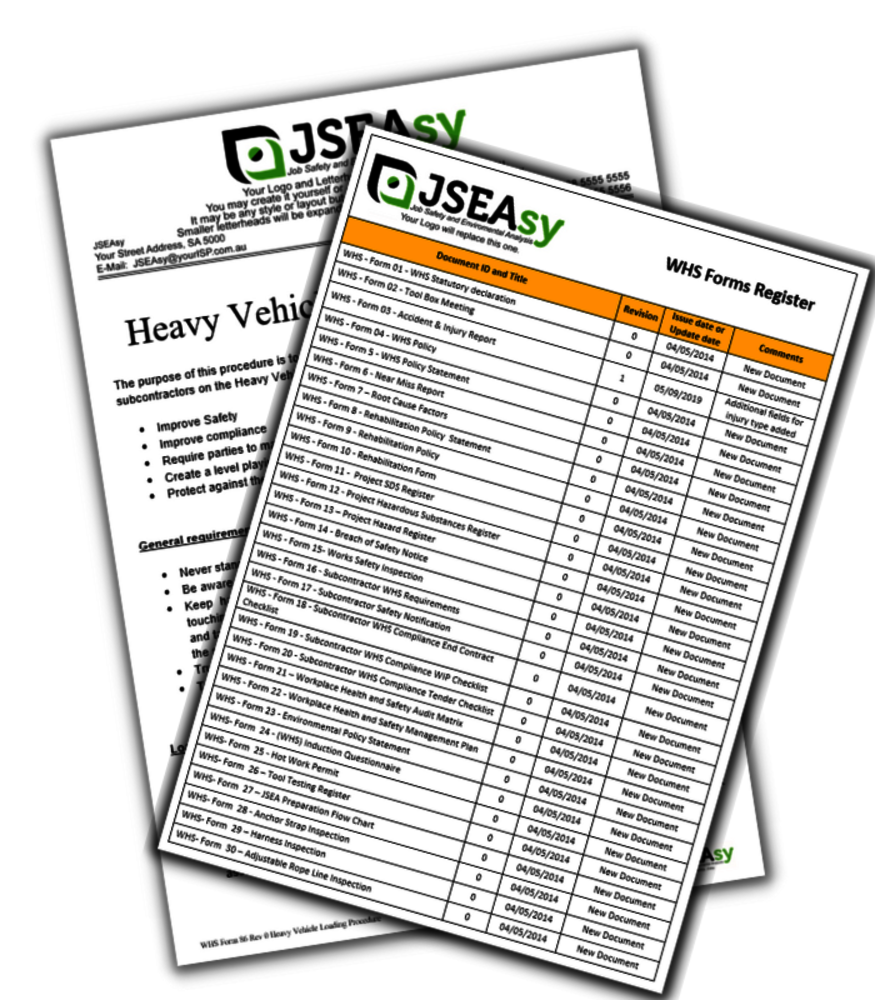Gross and Axle Weights Policy and Procedure. This document provides guidance to managing the risks of vehicle overloading.
Contents of this document are:
Purpose 3
Outcome 3
Scope 3
Policy 3
Legal Requirements 4
Vehicle Control: 4
Vehicle Use: 4
How to calculate weight: 5
Check list for Vehicle use: 5
Records and Documentation 5
Container Weight Declaration 6
Container Weight Declaration should include: 6
Responsibilities 6
PCBU responsibilities: 6
Employers’ responsibilities: 7
Driver responsibilities 7
Compliance Manager Responsibilities 7
Breaching the Policy 8
Raising Concerns 8
Related Policies 8
Why do you need a Gross and Axle Weights Policy and Procedure?
Having a Gross and Axle Weights Policy and Procedure is essential for ensuring the safe and legal operation of vehicles, particularly those involved in transportation, logistics, and heavy industries. Here’s why this policy is important:
Ensuring Compliance with Legal Weight Limits
- Avoiding Legal Penalties: Many jurisdictions have strict regulations on the maximum allowable gross and axle weights for vehicles. A formal policy ensures that your organization complies with these legal limits, avoiding fines, penalties, and potential legal action.
- Preventing Overloading: The policy helps prevent overloading, which is a common cause of violations. Overloaded vehicles are more likely to be stopped and inspected, leading to operational delays and legal consequences.
Protecting Infrastructure and Public Roads
- Minimizing Road Damage: Overloaded vehicles can cause significant damage to public roads, bridges, and other infrastructure, leading to costly repairs and contributing to deterioration. A Gross and Axle Weights Policy helps protect public infrastructure by ensuring vehicles are within safe weight limits.
- Supporting Community Relations: By adhering to legal weight limits and minimizing road damage, the organization demonstrates a commitment to being a responsible member of the community.
Enhancing Vehicle and Cargo Safety
- Preventing Vehicle Accidents: Overloaded vehicles are more difficult to control and are at a higher risk of accidents due to compromised braking, steering, and stability. The policy ensures that vehicles operate within safe weight limits, reducing the risk of accidents.
- Protecting Cargo: Properly managing gross and axle weights helps protect the cargo being transported from damage caused by uneven weight distribution or excessive stress on the vehicle.
Maintaining Vehicle Integrity and Longevity
- Reducing Wear and Tear: Excessive weight can cause significant wear and tear on vehicles, particularly on components like tires, brakes, and suspension systems. The policy helps extend the lifespan of vehicles by ensuring they are not overloaded, reducing maintenance costs and downtime.
- Improving Operational Efficiency: Vehicles that operate within their designed weight limits are more reliable and efficient, leading to fewer breakdowns and more consistent operations.
Promoting Operational Efficiency
- Optimizing Load Distribution: The policy provides guidelines for distributing weight evenly across axles, which improves vehicle stability, fuel efficiency, and overall performance. This contributes to more efficient and cost-effective operations.
- Streamlining Operations: By establishing clear procedures for managing gross and axle weights, the organization can streamline loading and transportation processes, reducing delays and ensuring timely deliveries.
Ensuring Compliance with Industry Standards
- Meeting Industry Best Practices: Many industries have established best practices for managing vehicle weights to ensure safety and efficiency. A formal policy helps your organization align with these industry standards, enhancing its reputation and competitiveness.
- Facilitating Audits and Inspections: The policy ensures that your organization is prepared for audits and inspections by maintaining accurate records and adhering to industry standards for vehicle weights.
Protecting Employee Safety
- Reducing the Risk of Injuries: Overloaded vehicles can pose significant safety risks to drivers and other employees, particularly during loading and unloading. The policy ensures that vehicles are loaded within safe limits, reducing the risk of injuries and accidents.
- Supporting Safe Work Practices: The policy reinforces the importance of safe work practices related to vehicle loading and operation, contributing to a safer work environment overall.
Mitigating Financial Risks
- Avoiding Costly Repairs: Overloading can lead to costly repairs and maintenance issues, such as damaged tires, axles, and suspension systems. The policy helps avoid these costs by ensuring vehicles are not overloaded.
- Reducing Liability Exposure: In the event of an accident or incident involving an overloaded vehicle, the organization could be held liable for damages. A Gross and Axle Weights Policy helps mitigate this risk by ensuring compliance with weight regulations.
Supporting Environmental Sustainability
- Reducing Fuel Consumption: Vehicles that operate within their designed weight limits are more fuel-efficient, reducing overall fuel consumption and emissions. The policy aligns with sustainability goals by promoting more efficient and environmentally friendly transportation practices.
- Minimizing Environmental Impact: Overloaded vehicles can contribute to greater wear and tear on roads, leading to increased emissions and environmental impact from road repairs. By preventing overloading, the policy helps minimize this impact.
Improving Customer Satisfaction
- Ensuring Timely Deliveries: By avoiding the delays and disruptions associated with overloaded vehicles, the policy helps ensure that deliveries are made on time, improving customer satisfaction and trust.
- Maintaining Product Quality: Proper weight management helps protect the integrity of goods in transit, ensuring that products arrive in good condition, which is crucial for customer satisfaction.
In summary, a Gross and Axle Weights Policy and Procedure is vital for ensuring safety, legal compliance, operational efficiency, and environmental sustainability. It protects vehicles, infrastructure, employees, and the public while also enhancing the organization’s reputation and reducing financial risks.
This form is also included in the JSEAsy Software Premium version


